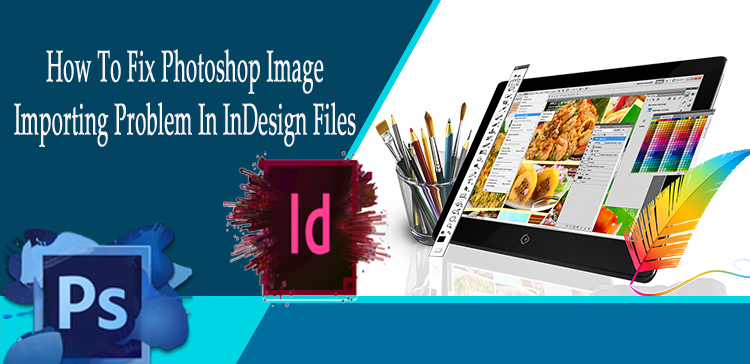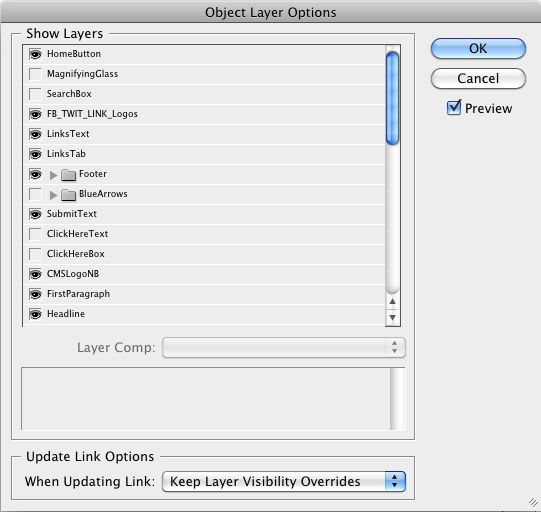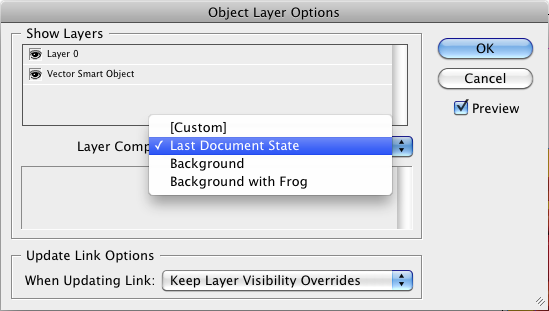How To Fix Photoshop(.psd) Image Importing Problem In InDesign

Are you encountering problems while importing Photoshop(.psd) image in your InDesign files, then keep reading the article to learn how to fix Photoshop(.psd) image importing problem.
InDesign’s great strength is in combining words and images to create a professional look page design. The first and most important thing to do when creating a document in Adobe InDesign is to add images because, without the addition of image, your InDesign document neither looks appealing nor attractive at all.
Sometimes web and graphics designers also need to import an image created in Adobe Photoshop into InDesign to render and create more effects.
However many users complained they are unable to import a PSD image into the InDesign problem on the forum thread and looking for the fixes.
Is there a simple way to export a template from .psd images to InDesign and then adjust the spine width in InDesign?
I was able to export a template from InDesign to Photoshop by clicking “Send to Photoshop.” Next, I built my cover in Photoshop. I couldn’t find a “Send to InDesign” button in Photoshop, so I saved the template as a PSD file.
Source: http://coverbuilder.brunoherfst.com/faq/q/how-to-import-from-photoshop-to-indesign/
Well, if you are the one also dealing with the Photoshop (.psd) image importing problem in InDesign file then follow the fixes given below one by one. But first, learn the correct steps to import PSD to InDesign.
How to Import PSD Files to InDesign?
Well, if you are facing a problem while importing Photoshop images in Indesign then here it is suggested to once again try to import PSD files in InDesign with the steps given below.
- Start your InDesign program.
- The from the toolbox > pick “Selection” > click on the graphics frame where you want to insert your PSD file.
- Go to File>Place and locate your PSD file. Click “Show Import Options” so that you can set specific options /settings for your imported file.
- Place your file into InDesign by clicking its file name and then clicking the “Open” button. The “show import option” box will get open asking you to choose your import setting options.
- You can check the “Show Preview” checkbox to see the effects of import options you have selected.
- After complete satisfaction with your selected settings and options, click the “OK” button to complete the process of Integrating Photoshop PSD Into Indesign.
- Your PSD file will then appear to the graphics frame that you have previously selected.
Now check if the Photoshop(.psd) image importing problem is resolved or not, if not then try the solutions given below one by one.
H0w To Fix Photoshop Image Importing Problem In Indesign?
Below check out some of the common problems with complete solutions related to importing images into Indesign.
Problem 1 – Fix Low-Resolution Images Issue In Indesign
Sometimes the problem occurs with the graphics that you have placed in your document that may appear pixilated or grainy. In most of cases, it’s because InDesign displays images in low resolution by default to improve performance.

Solution 1 – Check the Display Settings
To display graphics in high-resolution select View> Display Performance> High-Quality Display. It is estimated now the imported PSD images are not distorted, grainy or low resolution in InDesign.
Solution 2 – Use Place instead of Paste
Maybe the images are of low resolution even though you can change the display performance settings. For such images, make sure that you use the Place command to insert the image into InDesign. In some instances, pasting an image from another application may result in a preview image being inserted instead of the original file. So, make sure to use the Place option instead of Paste command.
Solution 3 – Check your Print Settings
If the image is appearing in low resolution at the time of printing, then check out your print settings to make sure that graphics are printing properly. In the graphics section of the Print dialog box select the send data> all option.
Solution 4- Improve Image Resolution
Even the images copied from the web page have also rendered with the same issue. For this, you need to replace your low-resolution image with a high-resolution image.
Problem 2 – Control Layer Visibility in Imported Images
Just by adjusting the layer visibility in InDesign lets, you vary an illustration depending on the context. Let’s take an example, in a Multi-language publication; you can create a single illustration that includes one text layer for each language.
Well, if you are importing Photoshop PSD files, layered PDFs, and INDD files then you can control the visibility of top-level layers. You can adjust the visibility either when you place a file or by using the Objects Layer options dialog box. Besides this, if the Photoshop file contains the layer comps then you can display the desired comp.
Solution 1 – Set layer visibility
- To do this try one of the following:
- To important graphic without first creating a frame, make sure that nothing in the document are selected.
- To import graphics into an existing frame, select the frame.
- To replace an existing image select the graphics frame.
- Choose File> Place and select a graphics file.
- In order to replace a selected object, select Replace Selected Item.
- Select Show Import options and then tap to the click Open option.
- From the image Import options or place dialog box click the Layers tab.
- In the Image Import Options or Place dialog box, click the Layers tab.
- To see the preview of the image, click Show Preview.
- (PDFs only) if you are placing a page from multipage PDF, click the arrow or type a page number under the preview image to preview a specific page.

- (Photoshop PSD files only) if the image contains layer comps, choose the layer comp you want to display from the Layer Comp pop-up menu.
Solution 2- Try one of the below-given solutions
- To open or close a layer set: Hit the triangle to the left of the folder icon.
- To hide a layer or layer set: hit to the eye shape icon present next to the layer or layer set.
- To display the layer or layer set: hit the empty eye column next to the layer or layer set.
- In case if you want to display only the content of a specific layer or layer set, hold down Alt (Windows) or Option (Mac OS) while clicking its eye icon. Hold down alt or option and click the eye icon shape again to restore the original visibility settings of another layer.
- If you want to change the visibility of multiple items, drag through the eye column.
Now set the “When Updating Link option as desired”
- Use Photoshop’s/PDF’s Layer Visibility
- Matches the layer visibility settings to those of the linked file when you update the link.
- Keep Layer Visibility Overrides
- Maintains the layer visibility settings as they were when the file was originally placed.

- After then click OK, and perform one of the following:

- To import it into a new frame, click the loaded graphics icon in the layout at the place where you want the upper left corner of the graphics to appear.
- In order to import into an existing frame, which is not selected, click the loaded graphics icon anywhere in that frame.
- In case to import into an existing frame, you don’t need to do anything. The image will automatically appear in that frame.
Please Note: If unknowingly or mistakenly you replace existing graphics with any other image then press CTRL+Z (Windows) or Command + z (Mac OS) to return the original image to the frame and display the loaded graphics icon.
Wrapping Things Up:
Hopefully, all the aforementioned workaround helps you in troubleshooting the issues regarding the importation of PSD images into InDesign.
There are two problems related to the imported PSD to InDesign, you can follow the fixes given as per your problem and hope now you can fix Photoshop(.psd) image importing problem completely.
Make sure to follow the steps carefully, but if you are still encountering the problem then share with us on our Facebook page.
Good Luck..!

Steven Telfer is a senior writer at filerepairtool.net. He is a technology expert having over 4 years of experience and loves to write in different subjects like Video Repair, Microsoft Excel, QuickBooks, Word & others. He has a Master’s degree in Computer Application and has solve many technical problems. In free time, he loves to read books and do research work to grow in his field.
